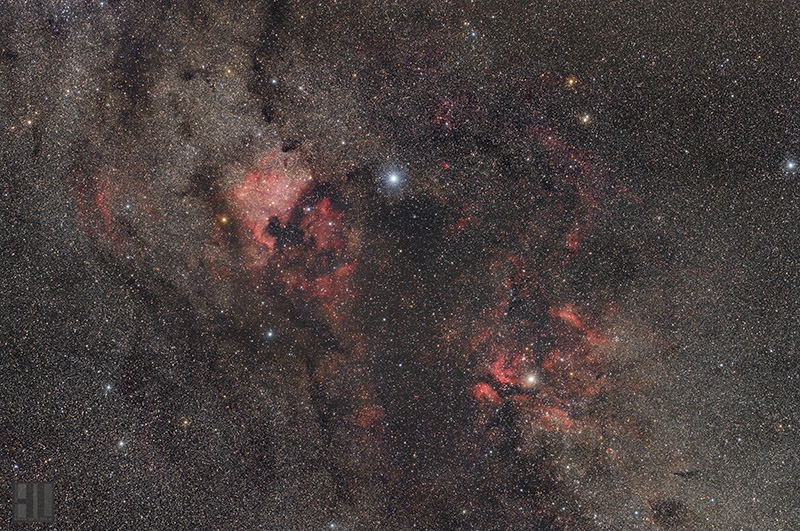Page 1 of 5
Submissions: 2021 December
Posted: Sun Dec 05, 2021 4:34 pm
by bystander
__________________________________________________________________________________________________
Please post your images here.
Please see
this thread before posting images; posting images demonstrates your agreement with
the possible uses for your image.
If hotlinking to an image, please ensure it is under 500K.
Hotlinks to images over 500K slow down the thread too much and will be disabled.
Thank you!
_________________________________________________________________________________________________
<- Previous submissions
Speed Differential
Posted: Sun Dec 05, 2021 4:52 pm
by MrRat
Comet Leonard
1.5 hours of exposure tracked at sidereal rate and aligned to the comet. Such that the trails represent the difference in apparent speed between the comet and the stars.

19 shots at 300 seconds each taken November 30th, 2021. Shot from my backyard with a ZWO ASI2600MC camera, William Optics GT81 telescope, and Losmandy GM811G equatorial mount.
Re: Submissions: 2021 December
Posted: Sun Dec 05, 2021 5:03 pm
by astrohokie
From Wikipedia:
"NGC 7380 is a young open cluster of stars in the northern circumpolar constellation of Cepheus, discovered by Caroline Herschel in 1787. The NGC 7380 complex is located at a distance of approximately 8.5 kilolight-years from the Sun, in the Perseus Arm of the Milky Way. The cluster spans ~20 light-years with an elongated shape and an extended tail. Age estimates range from 4 to 11.9 million years. At the center of the cluster lies DH Cephei, a close, double-lined spectroscopic binary system consisting of two massive O-type stars. This pair are the primary ionizing source for the surrounding H II region, and are driving out the surrounding gas and dust while triggering star formation in the neighboring region."
Images were calibrated and processed within Pixinsight and combined using a modified SHO palette with noise reduction and curves transformation.
Equipment:
Celestron EdgeHD 8 (2032mm)
Celestron OAG
Celestron Autofocuser
ASI 174MM Guide Camera
ASI 1600MM Pro Imaging Camera
ASI 7 position EFW
36 mm Astronomik 6nm Ha, O3, S2 filters
Total Intergration Time = 20 hours
Ha Intergration Time = 105 * 300sec
O3 Intergration Time = 106 * 210sec
S2 Integration Time = 56 * 360sec
Virginia, USA
Bortle 7
NGC 7380/SH2-142 Starless
https://telescopius.com/profile/astrohokie
Copyright: Mark Hoffman
NGC 7380/SH2-142 Stars
Copyright: Mark Hoffman
In the middle of Constellation Cygnus
Posted: Sun Dec 05, 2021 7:35 pm
by helmschelm
A Widefield from Constellation Cygnus
taken in August 2020
Large Version
https://www.stern-bild.at/images/galeri ... entral.jpg
Copyright: Helmut Liebhaber
https://stern-bild.at/
Data:
Mount: Vixen SXP
Guiding: Lacerta Mgen
Camera: Canon 6D Astro Modified
Optic: Canon 100mm L Macro @f5.6
Exposure: 31x300" | ISO 800 | Darks, Flats, Bias
Total exposure time: 2 hours 35 minutes
Filter: 4x60" with Cokin Diffuser P830
Location: Ebenwald (near Vienna), Austria | August 20-21, 2020
Image Processing: PixInsight, Photoshop
Clear Skies, Helmut
NGC6960 and Pickering's Triangle
Posted: Sun Dec 05, 2021 8:43 pm
by cfm2004
August/October 2021
Location: San Romualdo - Ravenna (italy)
Tecnosky AG70 F/5
Avalon M1 - QHY5III 174M su Celestron OAG .
CCD QSI 583ws cooled -15
RGB Astrodon Gen2 E-series and Narrowband 3nm
RGB-HA-OIII: R 30x5min, G 30x5min, B 30x5min, HA 30x15min and OIII 32x15min
Acquired with: MaximDL5 - Calibrata con Dark, Bias e Flat.
Processed with: MaximDL5, Astroart8, Starnet++ , Paint Shop Pro2021, Topaz e Nik plugin.
Cristina Cellini
Re: Submissions: 2021 December
Posted: Mon Dec 06, 2021 3:34 am
by KuriousGeorge
Comet Leonard, 12/4/2021, 5-minute subs. KG Observatory, Julian, CA
So I'm comfortably setup with the PL16803 CCD for a lengthy December galaxy session and my wife says "Do you know about the comet?".
We'll, I did not know about the comet. )-:
The PL16803 CCD needs at least 5-minute subs for a decent signal and it's too much work to suddenly swap in the ZWO ASI6200MM for 15-second or better subs.
So how do you shoot a comet using 5 minute subs? Gotta track on the comet, and the Planewave L600 does that pretty well.
With 5 minute subs and pretty good polar alignment, the L600 appeared to track to within 10 pixels (unguided) over 5 minutes – or less than 5" error. I guess that's "OK" for a comet. (-;
So here's 30 minutes L and 15 minutes of each R, G and B from 3:30 AM (comet at 21°) to sunrise just after 5 AM.
Subs were calibrated and then manually aligned with PI DynamicAlignment. The aligned subs were then combined using PI ImageIntegration, Winsorized Sigma Clipping, Sigma low = Sigma high = 1.000.
The star background was shot the next day with the same 5-minute subs during the same 3:30 AM to sunrise with the comet out of frame.
Faint star trails were removed with the PS Spot Healing brush.
So not perfect, but I'm very happy to capture it without much extra effort.
https://www.astrobin.com/prb9sb/
Re: Submissions: 2021 December
Posted: Mon Dec 06, 2021 2:37 pm
by atomo
Hello folks here Dolphin_Nebula
Telescope:FRA600
Reducer:0.7
Guide Scope:N/A
Mount : 10 Micron GM2000
Imaging camera: ZWO 2600MM
Guiding camera: N/A
Filters: Optolong filter set RGB/Ha/OIII
Plate solving: N/A
Imaging software: Sgpro
Guiding software: N/A
Processing software: Pixinsight
Exposures:
40 x 600 second H filter
56 X 600 second O filter
20 x 180 second R
20 x 180 second G
20 x 180 second B
Data acquisition:Manuel Marquez
Processed by me.
Copiright@Davide Mancini/Manuel Marquez
Re: Submissions: 2021 December
Posted: Mon Dec 06, 2021 3:21 pm
by mclane70
Comet C/2021 A1 Leonard closer to Messier n.3
December 3, 2021. Images taken from 4.00am to 5.15 a.m.
with camera QHY163M, filters LRGB Astronomik and telephoto lens Canon 300mm 2,8 L FD
120''x17 L 30'' R,G,B 10x15''L (to avoid M3 nucleus burn)
Elaboration Pixinsight Comet Alinment Tool and Photoshop.
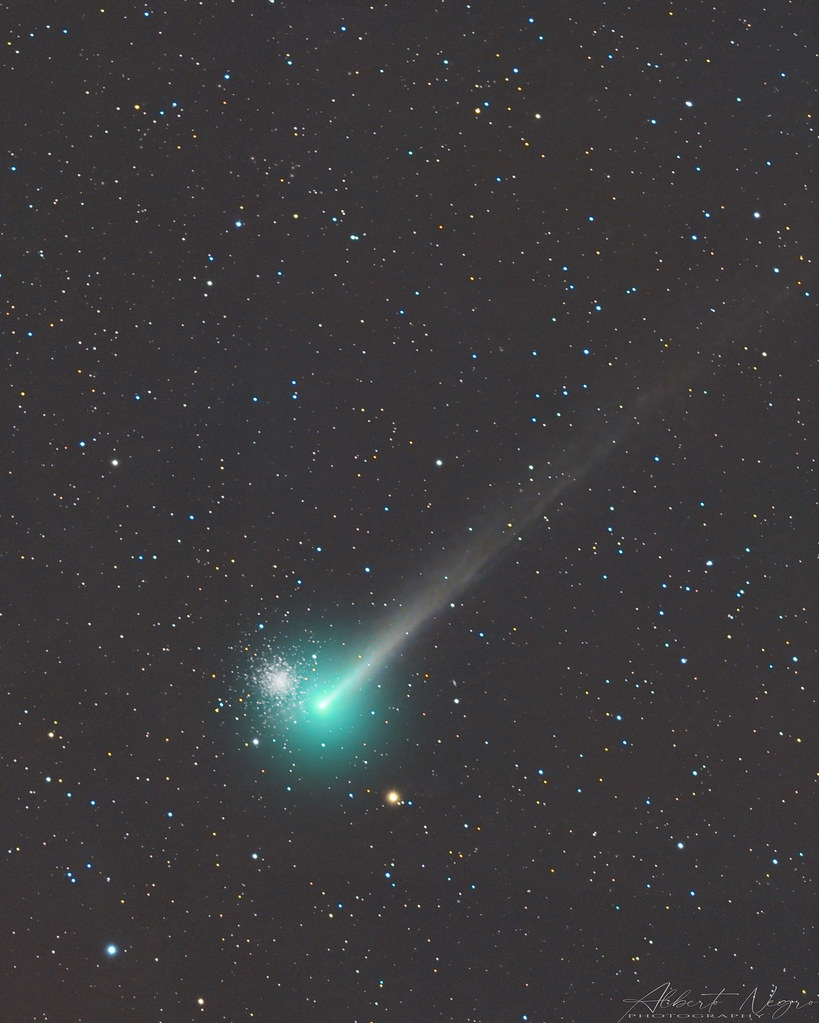 A1LeonardFL
A1LeonardFL by
Alberto Negro, su Flickr
Re: Submissions: 2021 December
Posted: Mon Dec 06, 2021 7:27 pm
by sendhilchinnasamy
Nebulae of Monoceros
This is an extremely widefield image of two very popular winter targets, Rosette nebula and the Cone nebula, Christmas Tree cluster in the constellation of Monoceros.
Towards the left of this image is The Cone Nebula that is a dark structure that arises from cold molecular hydrogen and dust sculpted from stellar wind coming from the bright, very young star cluster, NGC2264, the Christmas Tree Cluster. It is about 7 light years long. There is a bright emission/reflection region grading into a blue reflection region near the bright star.
The Rosette nebula is located towards the right of this image. It is a cosmic cloud of gas and dust that lies approximately 5000 light-years away and has a flower-like appearance.
Location: Georgetown, Texas
Total exposure: 47 hours 45 minutes

Re: Submissions: 2021 December
Posted: Mon Dec 06, 2021 7:33 pm
by carlos uriarte
Lbn 468 Nebula, 35h exp time with LRGB Astrodon filters. Takahashi FSQ 106ED + Paramount ME + Atik 460EX.
This field is the LBN 468 Region in the constellations of Cepheus and Draco (on the border). This is a region of dusty interstellar matter with some star formation. In the upper left corner is a small nebula illuminated by a protostar. The nebula is GM 1-29 also known as Gyulbudaghian's Nebula. The protostar is the variable PV Cep. LBN 468 is the large structure dominant in the image. Within LBN 468 are several cataloged dark Nebulae. These objects are identified in the annotated image. LBN 468 is about 1,600 light years distant from Earth; the region is influenced by the massive star forming region and star cluster associated with the IRIS Nebula (NGC 7023) about 1.5 degrees of sky to the East.
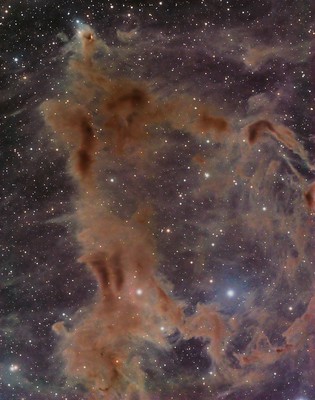 Lbn 468 Nebula
Lbn 468 Nebula by
Carlos Uriarte, en Flickr
Re: Submissions: 2021 December
Posted: Mon Dec 06, 2021 7:58 pm
by gabramson
Crescent Moon and Venus near local noon. The proximity of the Moon made finding Venus easier today. But it has been possible to spot bright Venus with naked eyes in bright daylight for several days. Seeing "a star" during daytime is a rare and fascinating experience.
Canon T3i, Tamron 18-270 (@200), F/11, 1/160 s.
Cheers,
Guillermo
Re: Submissions: 2021 December
Posted: Mon Dec 06, 2021 9:28 pm
by krphotogs
This image has about 7 different DSO’s (Deep Space Objects) in it, but the largest one is M42 – the Orion Nebula. Most anyone who has looked up at the night sky recognizes Orion. The constellation is visible from mid-fall through to the spring and is easily found looking at the 3 stars in Orion’s belt.
The Orion Nebula is a mere 1,500 light years away. The bright spot in the center is the nursery for stellar creation, the closest to the earth. It was first discovered in 1610, but the gaseous areas were not seen until about 1865.
This was taken on November 23 and consists of 14 x 300 second exposures.
Equipment used: AstroTech EDT115; Losmandy GM811 mount; ASI 294MC Pro camera; L-Extreme filter. Taken with APT and processed in Pixinsight.
Re: Submissions: 2021 December
Posted: Mon Dec 06, 2021 11:51 pm
by Rouzbeh
The Soul Nebula, IC 1871. A beautiful region of dense clouds that trigger star formation. The dark structures are clouds of dust obscuring the light from our view some 6,500 light-years away.
This image was captured through 3nm ultra-narrowband filters and is a composite of ionized Sulphur, Hydrogen, and Oxygen atoms and displayed with a modified SHO "Hubble" Palette. Hydrogen Alpha data was collected over 3 nights from the 15th to 17th of November with a lot of moonlight from the outskirts of Vancouver, Canada (Bortle 6).
Ha data was captured near the full moon (hence the shorter subs).
https://www.astrobin.com/5gd1sf/H/
Chroma 3nm H⍺: 118x300" (9h 50')
Chroma 3nm OIII: 19x500" (2h 38' 20")
Chroma 3nm Sii: 20x500" (2h 46' 40")
Integration: 15h 15'
Pixel scale: 0.924 arcsec/pixel
SH2-206 (NGC 1491)
Posted: Tue Dec 07, 2021 12:06 am
by stefanz
SH2-206 (NGC 1491)
SH2-206 (also known as NGC 1491) is an emission nebula in constellation Perseus. The interaction of the stellar wind of the ionizing star with a larger molecular cloud forms a small bubble-like structure.
Click on the images for detailed information and full resolution pictures.
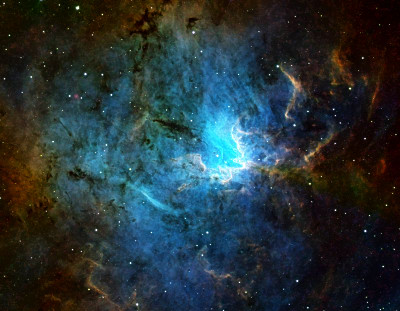
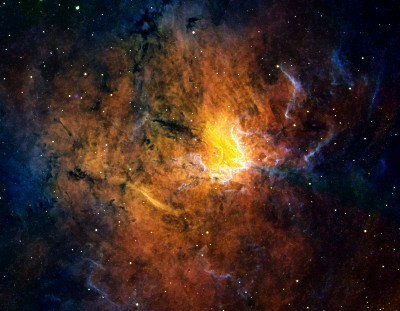
---
My Homepage
RSS news feed
Re: Submissions: 2021 December
Posted: Tue Dec 07, 2021 1:33 am
by cuiv
The California Nebula, taken from my rooftop in the Tokyo Metropolis.
Equipment and capture data:
Askar 200mm f4 lens (50mm aperture)
RisingCam IMX571 monochrome
SkyWatcher EQ6R
Astrodon 3nm SHO filters
44x300s Sii
45x300s OIII
44x300s Ha
Capture with N.I.N.A., processed with PixInsight
https://static.wixstatic.com/media/e58d ... 8b~mv2.jpg
Re: Submissions: 2021 December
Posted: Tue Dec 07, 2021 1:53 am
by KuriousGeorge
Starship Enterprise (NGC 1055). KG Observatory, Julian CA.
When my artistic wife first saw this image, she thought it looked like the Starship Enterprise. So I'll call it that here.
I quickly visited this distant galaxy several years ago after being inspired by the APOD image taken with the 8.2m Subaru Telescope...
https://apod.nasa.gov/apod/ap171109.html
https://www.astrobin.com/376357/
I finally had a chance to re-visit this year. It took nearly a week to capture 7 hours of Luminance with average FWHM of 2" in a 21.3 SQM sky. With an additional 12 hours of RGB (4 hours in each channel) I'm much happier with this 2x Drizzle result. (-:
"Spiral galaxy NGC 1055 is located 60 million light-year away. Seen edge-on, this island universe spans over 100,000 light-years, a little larger than our own Milky Way. The colorful stars in the foreground are well within our own Milky Way. The telltale pinkish star forming regions are scattered through winding dust lanes along the distant galaxy's thin disk. With a smattering of even more distant background galaxies, this deep image also reveals a boxy halo that extends far above and below the central bulge and disk of NGC 1055. The halo itself is laced with faint, narrow structures, and could represent the mixed and spread out debris from a satellite galaxy disrupted by the larger spiral some 10 billion years ago."
https://www.astrobin.com/q6ckfa/
Re: Submissions: 2021 December
Posted: Tue Dec 07, 2021 2:22 am
by Harles99
Crescent Moon & Venus: Close Together.
Venus and the Crescent were nice and close tonight.
 Crescent Moon & Venus
Crescent Moon & Venus by
Harley Grady, on Flickr
©Harley Grady 2021
Re: Submissions: 2021 December
Posted: Tue Dec 07, 2021 6:48 am
by logandc99
The Dolphin Head Nebula SH2-308
A collaboration between Oliver Berresford and Logan Carpenter
Image: The Dolphin Head Nebula
Credit: Logan Carpenter and Oliver Berresford.
Total integration : 46 hrs 40 mins
Captured over multiple nights from Oct 7th to Nov 27th 2021
Locations: Geelong, Victoria, Australia and Auckland, New Zealand.
Imaging scopes: Skywatcher Esprit 120 ED refractor and Skywatcher 150PDS Newtonian
Cameras: ASI2600MCPro and ASI2600MMpro
Filters: Optolong 7nm Ha and OIII and Optolong L-eXtreme
Processing: AstroPixel Processor, Pixinsight and Photoshop
Astrobin Link for full image :
https://www.astrobin.com/rva7vk/
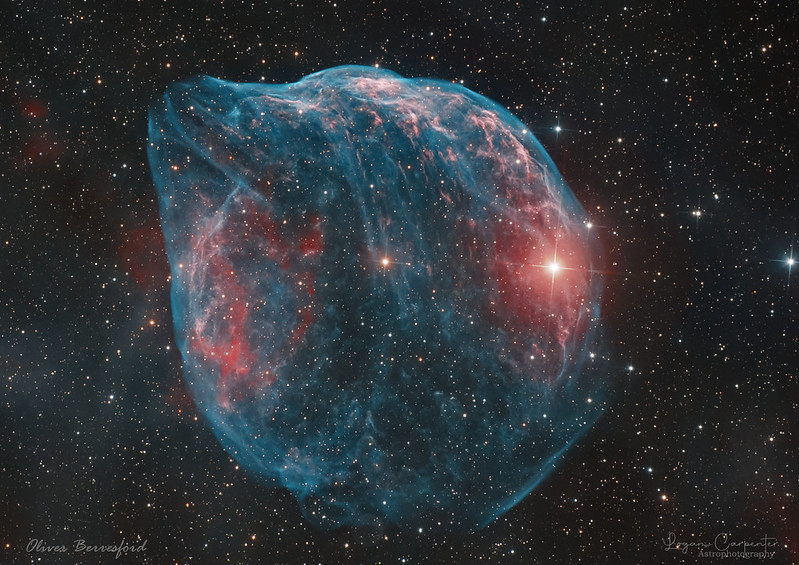 Dolphin head nebula SH2-308
Dolphin head nebula SH2-308 by
Logan Carpenter, on Flickr
Re: Submissions: 2021 December
Posted: Tue Dec 07, 2021 12:09 pm
by nicola montecchiari
Sh2-73
URL:
http://www.skymonsters.net
Copyright: Nicola Montecchiari
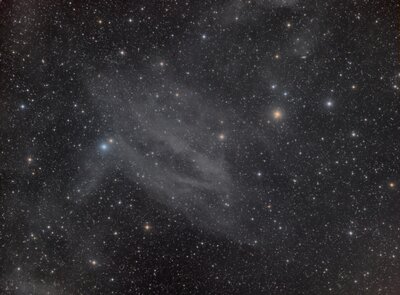
- Sh2-73
Re: Submissions: 2021 December
Posted: Tue Dec 07, 2021 3:52 pm
by tommasostella
The Clamshell nebula Sh2-119
https://www.facebook.com/tommaso.m.stella
Copyright: Tommaso Stella
From: Taranto (Italy)
Sky: Bortle 5/6
Lights: 34x600s
Total exposure: 5,6 h
Telescope: Takahashi FS-60CB + Reducer 0,72x
Camera: QHY 168C
Filters: Optolong L-Enhance
Mount: Skywatcher AZ-EQ6 GT
Processing: DeepSkyStacker, PixInsight, Photoshop CC
Re: Submissions: 2021 December
Posted: Tue Dec 07, 2021 10:14 pm
by vanamonde81
Planetary Conjunction above Danube's Backwater
Copyright: György Soponyai
Today evening I observed and captured the four conjuncting planets on the Southwestern-Western sky near Tolna, Hungary (the small city where I spent my childhood). The backwater of river Danube was acting as a cool foreground of the scene which is being dominated by the setting crescent Moon and Venus. Saturn is also visible at the topmost part of the photo, but Jupiter is not, as it would have been ruined the composition.
2021.12.07. Tolna, Hungary
Canon EOS 5D Mark II + Samyang EF 24/1.4
2.5sec, f/2.8, ISO 320
Re: Submissions: 2021 December
Posted: Tue Dec 07, 2021 10:50 pm
by gconzo
The great conjunction above rural landscape
Jupiter, Saturn, Moon and Venus in a magical atmosphere near Christmas in Palidoro (Rome) at 7th december 2021 17:46 local time.Sum of 6 photos of 4 seconds ISO-200 f / 3.5 with Nikon Coolpix P510 on tripod.
Author Giuseppe Conzo (Gruppo Astrofili Palidoro)
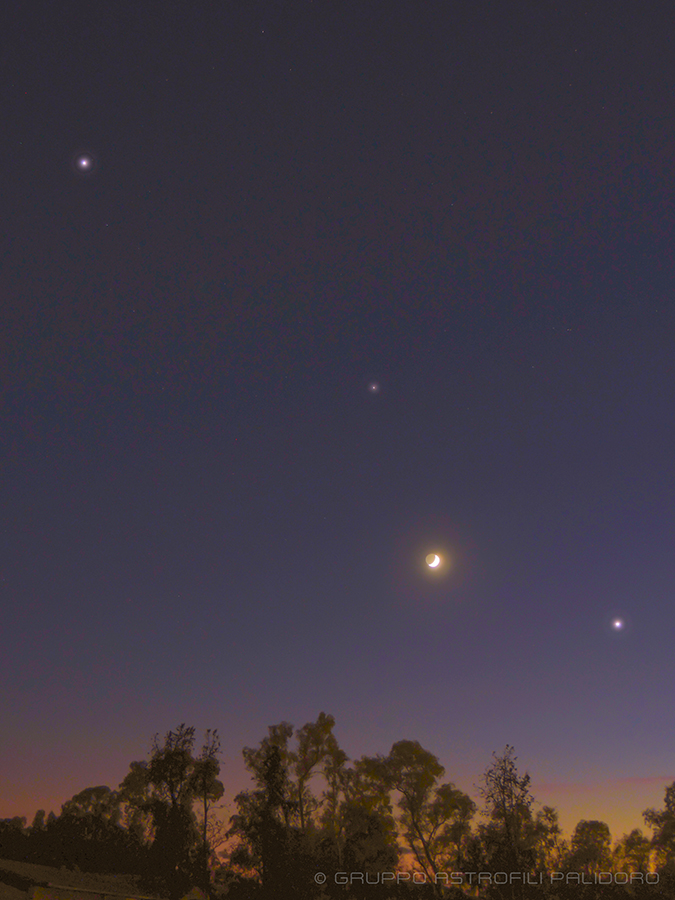
Re: Submissions: 2021 December
Posted: Wed Dec 08, 2021 6:29 am
by sydney
NGC 7535 (left) and NGC 7538 (right) are star-forming nebulae that straddle the Cassiopeia - Cepheus border. NGC 7635 is commonly known as the Bubble Nebula. The bubble is formed from hot stellar winds from a star that is 45 times more massive than our Sun. Outflow from the star pushes cold interstellar material away at a velocity exceeding 4 million miles per hour to form the perimeter of the bubble. The bubble is about 7 light-years in size and 7000 light-years away from Earth.
NGC 7538 is an emission and reflection nebula that is home to the largest known protostar. The European Space Agency's Herschel Space Observatory "identified 13 massive, dense clumps where colossal stars could form in the future" according to Cassandra Fallscheer, lead author of a paper published in The Astrophysical Journal, as well as a strange ring of stellar seeds which may be the edge of a bubble carved by previous stellar explosions. NGC 7538 is about 9000 light-years away from Earth.
Nick Pavelchak
https://www.astrobin.com/axckz2/
Online references used in the description:
https://hubblesite.org/contents/media/i ... Image.html
https://en.wikipedia.org/wiki/NGC_7635
https://www.esa.int/ESA_Multimedia/Imag ... y_NGC_7538
https://www.nasa.gov/jpl/herschel/pia18452
https://en.wikipedia.org/wiki/NGC_7538
https://www.universetoday.com/81107/a-p ... -ngc-7538/
Re: Submissions: 2021 December
Posted: Wed Dec 08, 2021 3:22 pm
by Ann
tommasostella wrote: ↑Tue Dec 07, 2021 3:52 pm
The Clamshell nebula Sh2-119
https://www.facebook.com/tommaso.m.stella
Copyright: Tommaso Stella
From: Taranto (Italy)
Sky: Bortle 5/6
Lights: 34x600s
Total exposure: 5,6 h
Telescope: Takahashi FS-60CB + Reducer 0,72x
Camera: QHY 168C
Filters: Optolong L-Enhance
Mount: Skywatcher AZ-EQ6 GT
Processing: DeepSkyStacker, PixInsight, Photoshop CC
I love this image partly because I love the the star which is ionizing the Clamshell nebula, 68 Cygni. It is one of my favorite stars. So it's nice to get a good look at the nebula surrounding it.
I also love the beautiful cluster, NGC 7039, which appears to be caught in the nebula at far lower right like a marvellous creature of the ocean caught in a fisherman's net.
But there is another "blurry" object, a much smaller one, at lower left. Is that by any chance cluster NGC 7062?
Ann
Re: Submissions: 2021 December
Posted: Wed Dec 08, 2021 8:23 pm
by topboxman
Andromeda Galaxy, M31 . RGB + Luminance. 0.78"/pixel image scale.
Chroma Red filter, 5 x 10 minutes, 1x1. 12/1/2021.
Chroma Green filter, 6 x 10 minutes, 1x1. 12/1/2021.
Chroma Blue filter, 6 x 10 minutes, 1x1. 12/1/2021.
Chroma Lum filter, 18 x 10 minutes, 1x1. 12/3/2021.
Total 5 hours and 50 minutes
Reno, NV USA
QHY600M camera settings:
Mode: 0
Gain: 0
Offset: 20
Temperature: -10C
TEC 160FL APO F/7 with TEC FRC (F/6.2), Astro-Physics A-P1100GTO GEM with absolute encoders. QHY600M. Sagitta OAG and Ultrastar autoguider (1.19"/sec), Starlight Instruments HSM motorized focuser.
Three different processes. Which one do you like best? I think I like the first one best.
Thanks,
Peter Nagy


